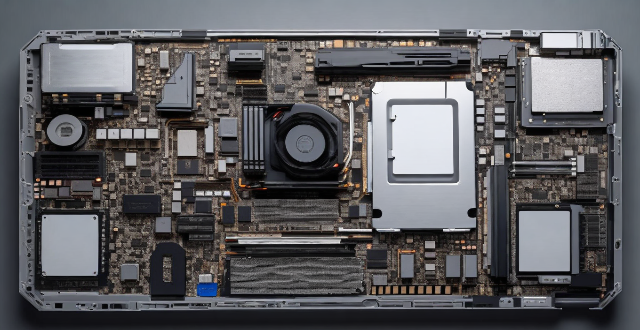Upgrading a computer processor can enhance performance and allow for more demanding applications. The process involves checking compatibility with the motherboard, choosing the right processor, gathering necessary tools, preparing the workspace, powering off and disconnecting the computer, opening the case, removing the old processor, installing the new one, applying thermal paste or pads, installing a cooler or fan if needed, reassembling the computer, updating drivers and BIOS, and testing the computer to ensure everything is working correctly.

Upgrading Your Computer Processor
Upgrading your computer processor can significantly improve its performance and allow you to run more demanding applications. Here's a step-by-step guide on how to upgrade your computer processor:
Step 1: Check Compatibility
Before upgrading your processor, you need to ensure that it is compatible with your motherboard and other components. You can check the compatibility by looking at the specifications of your motherboard and the processor you want to upgrade to. Make sure that the socket type, chipset, and other features are compatible.
Step 2: Choose the Right Processor
Once you have confirmed the compatibility, choose the right processor for your needs. Consider factors such as clock speed, number of cores, cache size, and power consumption. You can also read reviews and compare different models to find the best one for your budget and requirements.
Step 3: Gather Necessary Tools and Parts
To upgrade your processor, you will need some tools and parts. These may include:
- A screwdriver
- An anti-static wrist strap or mat
- Thermal paste or thermal pads
- A new processor
- Optional: a new cooler or fan (if needed)
Step 4: Prepare Your Workspace
Make sure you have a clean and well-lit workspace where you can comfortably work on your computer. Also, ensure that you have a static-free environment to prevent any damage to your components.
Step 5: Power Off and Disconnect Your Computer
Before starting the upgrade process, power off your computer and disconnect all cables and peripherals. It is also recommended to discharge any static electricity from your body by touching a metal object before handling any components.
Step 6: Open Your Computer Case
Open your computer case using the appropriate screws or latches. Be careful not to damage any cables or components while opening the case.
Step 7: Remove Old Processor
Locate the old processor on the motherboard and carefully remove it by lifting the retention arm and pulling it out gently. Be careful not to bend any pins or apply too much force.
Step 8: Install New Processor
Install the new processor into the socket on the motherboard. Align the pins or contacts on the processor with the corresponding holes or slots on the socket. Gently press down on the processor until it clicks into place.
Step 9: Apply Thermal Paste or Pads
Apply a small amount of thermal paste or use thermal pads between the processor and the heatsink or fan. This will help dissipate heat effectively and prevent overheating.
Step 10: Install Cooler or Fan (if needed)
If you are using a new cooler or fan, install it according to the manufacturer's instructions. Make sure it is securely attached to the processor and motherboard.
Step 11: Reassemble Your Computer
Once you have installed the new processor and applied thermal paste or pads, reassemble your computer by closing the case and reconnecting all cables and peripherals.
Step 12: Update Drivers and BIOS
After completing the upgrade, update your drivers and BIOS to ensure optimal performance and compatibility with the new processor. You can usually find these updates on the manufacturer's website or through Windows Update.
Step 13: Test Your Computer
Finally, test your computer to make sure everything is working correctly. Run benchmark tests, open applications, and monitor temperatures to ensure that the upgrade was successful.
In conclusion, upgrading your computer processor can be a rewarding experience that can significantly improve its performance. By following these steps and taking necessary precautions, you can safely upgrade your processor and enjoy faster processing speeds and better overall performance.